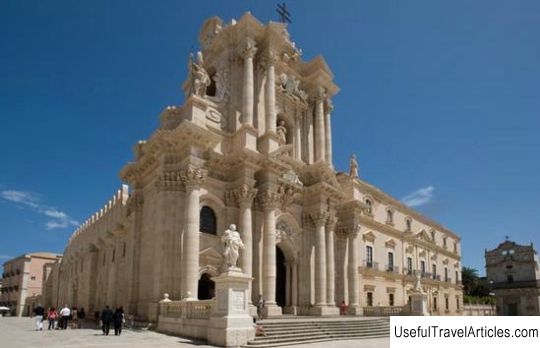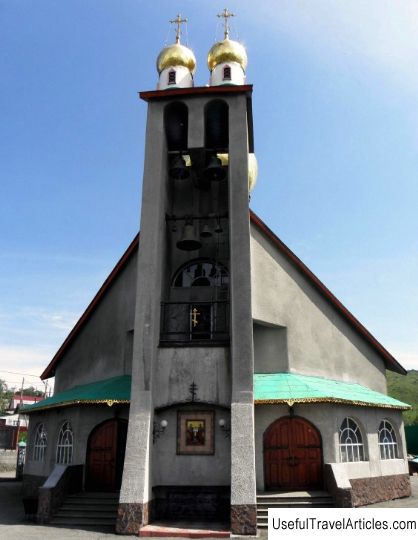Cathedral (Duomo di Siracusa) description and photos - Italy: Syracuse (Sicily)
Rating: 7,6/10 (1001 votes) 
Cathedral (Duomo di Siracusa) description and photos - Italy: Syracuse (Sicily). Detailed information about the attraction. Description, photographs and a map showing the nearest significant objects. The title in English is Duomo di Siracusa. Photo & DescriptionThe Cathedral is a shining jewel in one of the most picturesque squares in Syracuse. It is here that you can get acquainted in detail with the peculiarities of the church architecture of Italy - in various elements of the building, the features characteristic of this architecture are intertwined, which can be found in every town of the Apennine peninsula from Trento to Taranto. Most likely, the cathedral was built on the site of a previously existing temple in which the ancient Siculs used to worship - traces of their homes can be seen on Via Minerva and in the courtyard of the nearby Archbishop's Palace. In 480 BC. Greek settlers erected here a Doric temple in honor of the goddess Athena for helping in the battle with the Carthaginians. Ten of the 36 columns that once existed are still visible today against the wall of the left nave of the cathedral. And the monolithic block, which was part of the temple architrave, is now part of the altar in the presbytery. This Doric temple was one of the richest in all of Magna Graecia, and this certainly means that it has been plundered many times. The temple suffered especially serious damage in the 1st century BC. by the Roman praetor Guy Licinius Verres in revenge for the accusation of corruption (it must be said, fair). Among the objects he destroyed are portraits of the first rulers of Sicily. It is not known for certain when the ruins of an ancient Greek temple turned into a Christian church. In 640, at the initiative of Bishop Zosima, it became known as the Cathedral of Syracuse. The bishop significantly rebuilt the building, expanding it and, unfortunately, practically destroying the traces of former buildings. Only Byzantine arches and a hemispherical apse at the end of the northern side aisle have survived, as well as a wonderful marble floor. In the next few centuries, the cathedral again became a kind of repository of priceless works of art. When the Arabs invaded Sicily in the middle of the 9th century, they took from here over 5 thousand pounds of gold and 10 thousand pounds of silver. And then the plundered cathedral was subjected to the most terrible humiliation - it was turned into a mosque for a whole century. But, like many other Sicilian "jewels", the church was saved by the Normans, who returned it to the fold of Christianity and erected fortified walls in the central nave, which have survived to this day almost unchanged. Under the Normans, the apse was decorated with mosaics, fragments of which are visible to this day on the wall behind the font. The font, by the way, was made by the Greeks, and it stands on the foundations of the Norman era in the form of lions, carved in the 13th century. After a period of relative prosperity, eastern Sicily was once again in ruins - this time as a result of the terrible earthquake of 1693. The cathedral was almost destroyed and, like most buildings, was later rebuilt in the unique Sicilian Baroque style. Around the surviving central nave and apse, several exquisitely decorated chapels were built with elegant columns, exquisite wrought iron gates, multi-colored frescoes and masterfully executed statues. The facade of the church, erected a century later, has become a subject of special pride. It was designed by Andrea Palma and decorated with sculptures by the great Sicilian master Ignazio Marabitti. The 3,000-year-old cathedral's final restoration began in 1911, when architect Paolo Orso began the painstaking work of removing the horrific 19th-century "decorations" to which every Italian church was exposed.         We also recommend reading House ”Golden Sun” (Kamienica Pod Zlotym Sloncem) description and photos - Poland: Wroclaw Topic: Cathedral (Duomo di Siracusa) description and photos - Italy: Syracuse (Sicily). |




